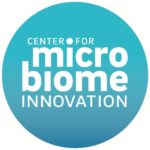In this Let’s Talk Exascale podcast, Kathy Yelick and Lenny Oliker from LBNL describe how the ExaBiome project is developing computational tools to analyze microbial species—bacteria or viruses that typically live in communities of hundreds of different species. “Pushing past the traditional shared-memory-system approach, the ExaBiome team has developed efficient distributed memory implementations and analyzed some of the largest datasets in the metagenomics community.”
Meet the Future at the Supercomputing Frontiers Europe 2020 Conference
Supercomputing Frontiers Europe 2020 is a platform for the thought leaders from both academia and industry to interact and discuss the visionary ideas, the most important global trends and substantial innovations in supercomputing. This year the SCEF 2020 will take place March 23-26, 2020 in Warsaw, Poland.
Panasas Donates 500 TB ActiveStore Solution to CMI Center for Microbiome Innovation
Today the UC San Diego Center for Microbiome Innovation (CMI) announced that Panasas has joined CMI’s Corporate Member Board and has donated a 500TB Panasas ActiveStor high-performance storage solution to support the acceleration of microbiome research. ActiveStor drives productivity and accelerates time to results with ultrafast streaming performance, true linear scalability, enterprise-grade reliability and unparalleled ease of management. “We are grateful for the support of Panasas,” said Center Faculty Director Rob Knight. “The advanced ActiveStor data storage solution we now have at our disposal will greatly enhance the activities of the Center.”
Larry Smarr Presents: 50 Years of Supercomputing
Larry Smarr presented this talk as part of NCSA’s 30th Anniversary Celebration. “For the last thirty years, NCSA has played a critical role in bringing computational science and scientific visualization to the national user community. I will embed those three decades in the 50 year period 1975 to 2025, beginning with my solving Einstein’s equations for colliding black holes on the megaFLOPs CDC 6600 and ending with the exascale supercomputer. This 50 years spans a period in which we will have seen a one trillion-fold increase in supercomputer speed.”
Larry Smarr Presents: Using Supercomputers to Reveal your Inner Microbiome
“I have been collecting massive amounts of data from my own body over the last ten years, which reveals detailed examples of the episodic evolution of this coupled immune-microbial system. An elaborate software pipeline, running on high performance computers, reveals the details of the microbial ecology and its genetic components. A variety of data science techniques are used to pull biomedical insights from this large data set. We can look forward to revolutionary changes in medical practice over the next decade.”








